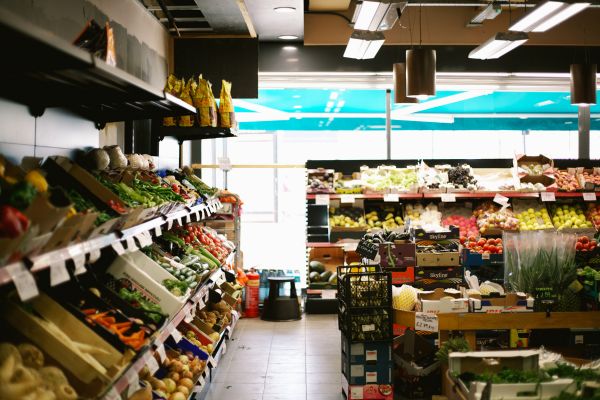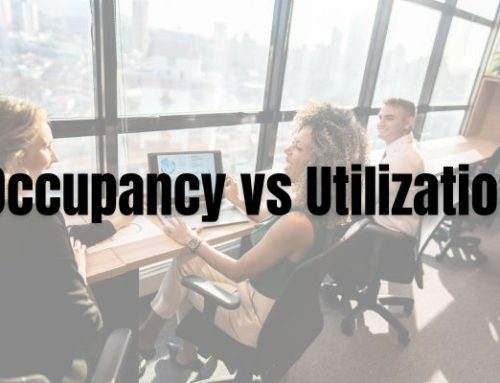How to Measure Retail Store Traffic | Methods & Tools Explained
How to measure retail store traffic is crucial knowledge for entrepreneurs in this digital age. Retailers with physical stores now have e-commerce shops to contend with. Since they sell offline, their best asset is foot traffic.
It is the first thing they should understand to compete effectively with other physical stores and online shops. Foot traffic data is hard to analyze without proper tools and expertise.
This detailed post explains how to collect, measure, and analyze your retail foot traffic. It also enumerates the benefits of measuring retail store foot traffic.
How to Measure Retail Store Traffic
Retail store foot traffic refers to the number of guests who enter a brick-and-mortar shop. If the foot traffic is high, a physical retail store can increase its sales and profits.
Retailers should learn how to measure retail store traffic to ensure they are resilient in the challenging business world. Here are the most popular retail traffic tracking and measuring tools:
- Manual People Counters – Some retail shops use the manual counting method to measure foot traffic. Employees stay at the store entrance with a clicker that counts potential buyers. The manual counter is the most affordable foot traffic analyzer. Even so, it is one of the oldest traffic detection systems that is more prone to human error. If foot traffic inevitably gets high, the employee holding the clicker can feel overwhelmed and fail to count everyone. If two or more people enter the store to shop together, the manual counter might count them individually. A manual counter can also calculate a group of unrelated people as a single person. These human errors can lead to inconsistent store traffic data. To do accurate and reliable foot traffic analytics, avoid manual counters.
- Beam Sensors – Another crucial point to discuss on how to measure retail store traffic is beam sensors. The beams are more advanced than manual counters but can still produce errors. A beam sensor uses an infrared light technology to eject a beam across the entrance. Each time this beam breaks, the sensor counts a guest. It can record inconsistent foot traffic data due to false triggers. Since it counts anything that breaks the beam, it might calculate an unruly kid who repeatedly gets in and out of the shop. Hence, a beam sensor can exaggerate the number of actual customers.
- Thermal Imaging Systems – The level of accuracy depends on the available field of vision. The installer should clear the entrance area to enable the overhead cameras to count every guest. Thermal imaging systems are more technologically advanced than manual counters and beam sensors. They have overhead cameras that detect heat signatures to recognize and count customers. While these are more reliable, they are too expensive for small and medium retailers. Their cameras require no barricades in their angle of view, making installation work challenging.

- Security Cameras – If you intend to measure retail foot traffic to only count people, security cameras are a good option. They will record movements around the store, but cannot turn that data into actionable insights to support your decision-making processes.
- AI-powered Video Analytics – One of the most advanced ways to do retail foot traffic analytics is AI-powered video analytics plus existing security cameras. It will use your security cameras to track people’s movements, reveal their favorite spots within the shop, and show total dwell times. It can integrate with your POS to help you compare retail traffic to sales and compute your conversion rates. This information can help you measure the success rate of your product placements, promotions, and employee scheduling strategies. Some AI-powered video analytics systems connect to the cloud. This supports how to measure retail store traffic remotely. These can help you check remote store traffic patterns from one dashboard. You can then decide which operations and marketing strategies to change across your subsidiaries.
- Location Intelligence Platforms – These platforms offer retailers tools for analyzing retail foot traffic at any commercial location. They apply cutting-edge technological methods, including machine learning and data science to derive footfall analytics from location data. The best location intelligence platforms tend to be user-friendly, allowing retailers with little technical knowledge to analyze their foot traffic data. Location intelligence systems are among the most accurate modern methods of tracking and analyzing traffic to retail stores, supermarkets, malls, and other points of interest. The most advanced platforms, including Placer.ai, offer demographic and psychographic datasets that you can add to your analysis. They also ensure high levels of data privacy to prevent possible breaches.
Benefits of Measuring Retail Foot Traffic
Now you know how to measure retail store traffic with different tools. The next thing is to understand why measuring foot traffic is necessary. Discover the benefits of calculating foot traffic below:
- Discover Buying Patterns – If you learn how to measure retail store traffic, you can understand many things about your customers. For instance, you can see where they come from, which specific days they fill your store, their total dwell time, and which product shelves they like to visit. Additionally, you can determine the shopper’s yield by dividing your aggregate sales by the foot traffic data gathered over a known period. Analyzing this data alongside broader retail foot traffic trends can help you anticipate seasonal fluctuations and adapt your strategy accordingly. The analysis of foot traffic can enable a retail store to increase its growth by creating more effective marketing and staffing strategies.
- Improve Staffing – A retail store traffic analysis does more than help you track customer behaviors and patterns. Traffic data can reveal your peak hours and days, to allocate human resources more effectively. During slow days, you can assign the sales floor duties to fewer people to better control your operational costs.
- Better Product Placements – Knowledge of how to measure retail store traffic can help you check how customers tour your store. The analytics data can reveal the product shelves they frequent and the items they pick often. You can see the zones they spend more time on and the most deserted ones. With this information, you can improve your product displays and ensure the strategic positioning of products that move slowly.
- Enhance Marketing Strategies – The best time to offer discounts and gifts is on your busiest business days. Learning how to measure retail store traffic is indispensable, as it will produce information on your peak hours. This foot traffic data will help you launch your advertising campaigns, track their progress, and make the necessary changes.
- Assess Expansion Possibilities – One way a business can grow is to expand its territory. For this to happen, a retailer should track foot traffic data to determine how to replicate the same success in new locations. They can also assess the foot traffic of the geographical regions they plan to open shops in using advanced location intelligence platforms.
- Identify Factors Affecting Foot Traffic – Once you begin to measure retail foot traffic, you can discover the factors that limit or build your success. For instance, you can calculate the number of customers your shop attracts on rainy days. How do events like public holidays or local events affect your foot traffic data? This information can help you attract crowds of people who attend these holidays and events to your retail store.
Wrapping Up
Foot traffic metric is not something you want to ignore if you seek retail business success. Take the time to learn how to measure retail store traffic, and thank us later.
Foot traffic data allows you to study customer behaviour and movement on the shopping floor. You can see where they dwell often and what they end up picking.
With accurate foot traffic data, you can identify areas that require better staffing strategies or product placements. Lastly, you can make a reliable business expansion plan with consistent foot traffic data.






